News
UN: SDG 2, Zero Hunger may not be Achieved in 2030
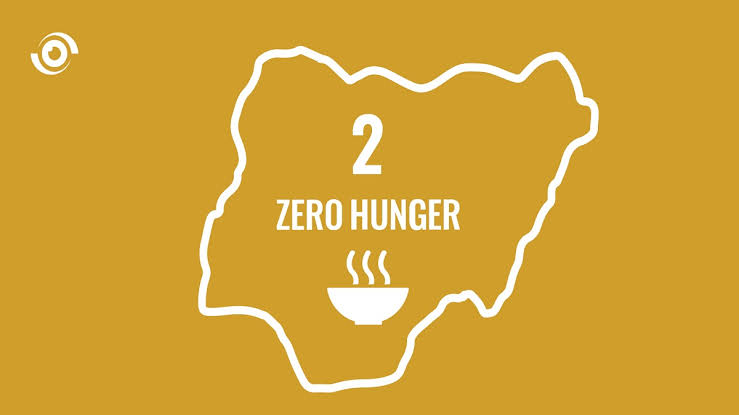
UN: SDG 2, Zero Hunger may not be Achieved in 2030
***1/5th of Africans Faced Hunger in 2023
By: Michael Mike
The World is at the risk of not achieving Sustainable Development Goal (SDG) 2 and Zero Hunger by 2030.
The annual report, launched this year in the context of the G20 Global Alliance against Hunger and Poverty Task Force Ministerial Meeting in Brazil, issued by five United Nations (UN) agencies has warned.
The report which showed that the world has been set back 15 years, with levels of undernourishment comparable to those in 2008-2009, disclosed that around 733 million people faced hunger in 2023, equivalent to one in eleven people globally and one in five in Africa, according to the latest State of Food Security and Nutrition in the World (SOFI) published on Wednesday by five United Nations specialized agencies.
A statement on Thursday by the United Nations agencies said despite some progress in specific areas such as stunting and exclusive breastfeeding, an alarming number of people continue to face food insecurity and malnutrition as global hunger levels have plateaued for three consecutive years, with between 713 and 757 million people undernourished in 2023—approximately 152 million more than in 2019 when considering the mid-range (733 million).
The statement said: “Regional trends vary significantly: the percentage of the population facing hunger continues to rise in Africa (20.4 percent), remains stable in Asia (8.1 percent)—though still representing a significant challenge as the region is home to more than half of those facing hunger worldwide —and shows progress in Latin America (6.2 percent). From 2022 to 2023, hunger increased in Western Asia, the Caribbean, and most African subregions.
“If current trends continue, about 582 million people will be chronically undernourished in 2030, half of them in Africa, warn the Food and Agriculture Organisation of the United Nations (FAO), the International Fund for Agricultural Development (IFAD), the United Nations Children’s Fund (UNICEF), the UN World Food Programme (WFP), and the World Health Organisation (WHO). This projection closely resembles the levels seen in 2015 when the Sustainable Development Goals the were adopted, marking a concerning stagnation in progress.”
The report highlighted that access to adequate food remains elusive for billions. In 2023, around 2.33 billion people globally faced moderate or severe food insecurity, a number that has not changed significantly since the sharp upturn in 2020, amid the COVID-19 pandemic. Among those, over 864 million people experienced severe food insecurity, going without food for an entire day or more at times.
The report added that this number has remained stubbornly high since 2020 and while Latin America showed improvement, broader challenges persist, especially in Africa where 58 percent of the population is moderately or severely food insecure.
“The lack of economic access to healthy diets also remains a critical issue, affecting over one-third of the global population. With new food price data and methodological improvements, the publication reveals that over 2.8 billion people were unable to afford a healthy diet in 2022. This disparity is most pronounced in low-income countries, where 71.5 percent of the population cannot afford a healthy diet, compared to 6.3 percent in high-income countries. Notably, the number dropped below pre-pandemic levels in Asia and in Northern America and Europe, while it increased substantially in Africa.
“While progress has been made in increasing exclusive breastfeeding rates among infants to 48%, achieving global nutrition targets will be a challenge. Low birthweight prevalence has stagnated around 15%, and stunting among children under five, while declining to 22.3%, still falls short of achieving targets. Additionally, the prevalence of wasting among children has not seen significant improvement while anaemia in women aged 15 to 49 years has increased,” the report further said.
According to the report: “Similarly, new estimates of adult obesity show a steady increase over the last decade, from 12.1 percent (2012) to 15.8 percent (2022). Projections indicate that by 2030, the world will have more than 1.2 billion obese adults. The double burden of malnutrition – the co-existence of undernutrition together with overweight and obesity – has also surged globally across all age groups. Thinness and underweight have declined in the last two decades, while obesity has risen sharply.
“These trends underscore the complex challenges of malnutrition in all its forms and the urgent need for targeted interventions as the world is not on track to reach any of the seven global nutrition targets by 2030, the five agencies indicate.
“Food insecurity and malnutrition are worsening due to a combination of factors, including persisting food price inflation that continues to erode economic gains for many people in many countries. Major drivers like conflict, climate change, and economic downturns are becoming more frequent and severe. These issues, along with underlying factors such as unaffordable healthy diets, unhealthy food environments and persistent inequality, are now coinciding simultaneously, amplifying their individual effects.”
This year’s report’s theme “Financing to end hunger, food insecurity and all forms of malnutrition’’, emphasized that achieving SDG 2 Zero Hunger requires a multi-faceted approach, including transforming and strengthening agrifood systems, addressing inequalities, and ensuring affordable and accessible healthy diets for all. It calls for increased and more cost-effective financing, with a clear and standardized definition of financing for food security and nutrition.
The heads of the five UN agencies, FAO Director-General QU Dongyu; IFAD President Alvaro Lario; UNICEF Executive Director Catherine Russell; WFP’s Executive Director Cindy McCain; and WHO Director-General Dr. Tedros Adhanom Ghebreyesus write in the report’s Foreword: “Estimating the gap in financing for food security and nutrition and mobilizing innovative ways of financing to bridge it must be among our top priorities. Policies, legislation and interventions to end hunger and ensure all people have access to safe, nutritious and sufficient food (SDG Target 2.1), and to end all forms of malnutrition (SDG Target 2.2) need significant resource mobilization. They are not only an investment in the future, but our obligation. We strive to guarantee the right to adequate food and nutrition of current and future generations”.
The statement said, as highlighted during a recent event in the High-Level Political Forum at UN headquarters in New York, the report underscores that the looming financing gap necessitates innovative, equitable solutions, particularly for countries facing high levels of hunger and malnutrition exacerbated by climate impacts.
It said: “Countries most in need of increased financing face significant challenges in access. Among the 119 low- and middle-income countries analyzed, approximately 63 percent have limited or moderate access to financing. Additionally, the majority of these countries (74 percent) are impacted by one or more major factors contributing to food insecurity and malnutrition. Coordinated efforts to harmonize data, increase risk tolerance, and enhance transparency are vital to bridge this gap and strengthen global food security and nutrition frameworks.
The FAO Director-General, Qu Dongyu said: “Transforming agrifood systems is more critical than ever as we face the urgency of achieving the SDGs within six short years. FAO remains committed to supporting countries in their efforts to eradicate hunger and ensure food security for all. We will work together with all partners and with all approaches, including the G20 Global Alliance against Hunger and Poverty, to accelerate the needed change. Together, we must innovate and collaborate to build more efficient, inclusive, resilient, and sustainable agrifood systems that can better withstand future challenges for a better world.”
IFAD President, Alvaro Lario: “The fastest route out of hunger and poverty is proven to be through investments in agriculture in rural areas. But the global and financial landscape has become far more complex since the Sustainable Development Goals were adopted in 2015. Ending hunger and malnutrition demands that we invest more – and more smartly. We must bring new money into the system from the private sector and recapture the pandemic-era appetite for ambitious global financial reform that gets cheaper financing to the countries who need it most.”
UNICEF Executive Director, Catherine Russell: “Malnutrition affects a child’s survival, physical growth, and brain development. Global child stunting rates have dropped by one third, or 55 million, in the last two decades, showing that investments in maternal and child nutrition pay off. Yet globally, one in four children under the age of five suffers from undernutrition, which can lead to long-term damage. We must urgently step-up financing to end child malnutrition. The world can and must do it. It is not only a moral imperative but also a sound investment in the future.”
WFP Executive Director, Cindy McCain: “A future free from hunger is possible if we can rally the resources and the political will needed to invest in proven long-term solutions. I call on G20 leaders to follow Brazil’s example and prioritize ambitious global action on hunger and poverty. “We have the technologies and know-how to end food insecurity – but we urgently need the funds to invest in them at scale. WFP is ready to step up our collaboration with governments and partners to tackle the root causes of hunger, strengthen social safety nets and support sustainable development so every family can live in dignity.”
WHO Director-General, Dr. Tedros Adhanom Ghebreyesus: “The progress we have made on reducing stunting and improving exclusive breastfeeding shows that the challenges we face are not insurmountable. We must use those gains as motivation to alleviate the suffering that millions of people around the world endure every day from hunger, food insecurity, unhealthy diets and malnutrition. The substantial investment required in healthy, safe and sustainably produced food is far less than the costs to economies and societies if we do nothing.”
The State of Food Security and Nutrition in the World is an annual report jointly prepared by the Food and Agriculture Organisation of the United Nations (FAO), the International Fund for Agricultural Development (IFAD), the United Nations Children’s Fund (UNICEF), the UN World Food Programme (WFP) and the World Health Organisation (WHO).
Since 1999, it has monitored and analysed the world’s progress towards ending hunger, achieving food security and improving nutrition. It also provides an in-depth analysis of key challenges for achieving these goals in the context of the 2030 Agenda for Sustainable Development. The report targets a wide audience, including policymakers, international organizations, academic institutions and the general public.
This year’s theme is timely and relevant in the run-up to the Summit of the Future, and the Fourth International Conference on Financing for Development in 2025.
UN: SDG 2, Zero Hunger may not be Achieved in 2030
News
UPDATE: Five dead, 35 injured in suicide IED attack on Gamborun mosque
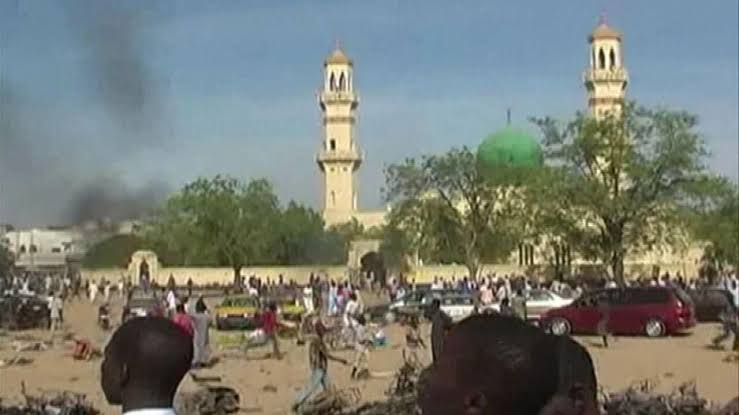
UPDATE: Five dead, 35 injured in suicide IED attack on Gamborun mosque
By: Zagazola Makama
No fewer than five worshippers were killed, while 35 others sustained injuries on Wednesday following an improvised explosive device (IED) attack by a suicide bomber at a mosque in Gamborun area of Maiduguri, Borno State.
The incident occurred at about 6:15 p.m. during Magrib prayers when the attacker detonated the IED inside the mosque, which was filled with worshippers.
The Police Public Relations Officer (PPRO) in the state, DSP Nahum Daso, confirmed the incident, saying the explosion killed five persons on the spot and left 35 others with varying degrees of injuries.
Daso said the injured victims were immediately evacuated to hospitals in Maiduguri for medical treatment.
He added that men of the Explosive Ordnance Disposal (EOD) unit, alongside other security agencies, were deployed to the scene to secure the area, cordon off the vicinity and conduct thorough checks to rule out the presence of secondary explosive devices.
UPDATE: Five dead, 35 injured in suicide IED attack on Gamborun mosque
News
Bomb explodes inside mosque in Maiduguri market, worshippers killed

Bomb explodes inside mosque in Maiduguri market, worshippers killed
By: Zagazola Makama
Several worshippers were killed on Tuesday after an explosive device detonated inside a mosque at Gamborun Market in Maiduguri, the Borno State capital.
The explosion occurred while worshippers were gathered for prayers, causing panic and chaos within the busy market area.
Eyewitnesses said the blast ripped through part of the mosque, killing some worshippers instantly and leaving others with varying degrees of injuries.
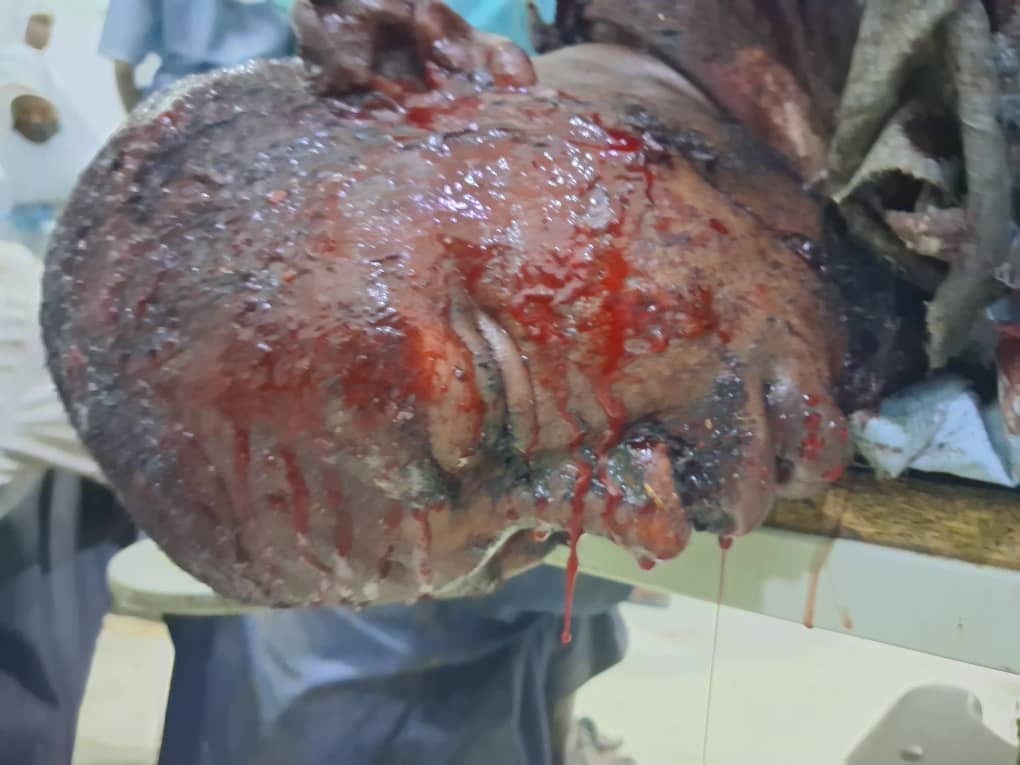
Traders and residents in the area were seen fleeing the scene as thick smoke billowed from the mosque, while others attempted to assist victims before emergency responders arrived.
Security operatives cordoned off the area shortly after the incident to prevent further casualties and to allow for preliminary assessment of the situation.

As of the time of filing this report, the exact number of casualties had not been officially confirmed.
Bomb explodes inside mosque in Maiduguri market, worshippers killed
News
Igbo Association Raises Alarm Over Abuja–South East Highways, Seeks Urgent Federal Action
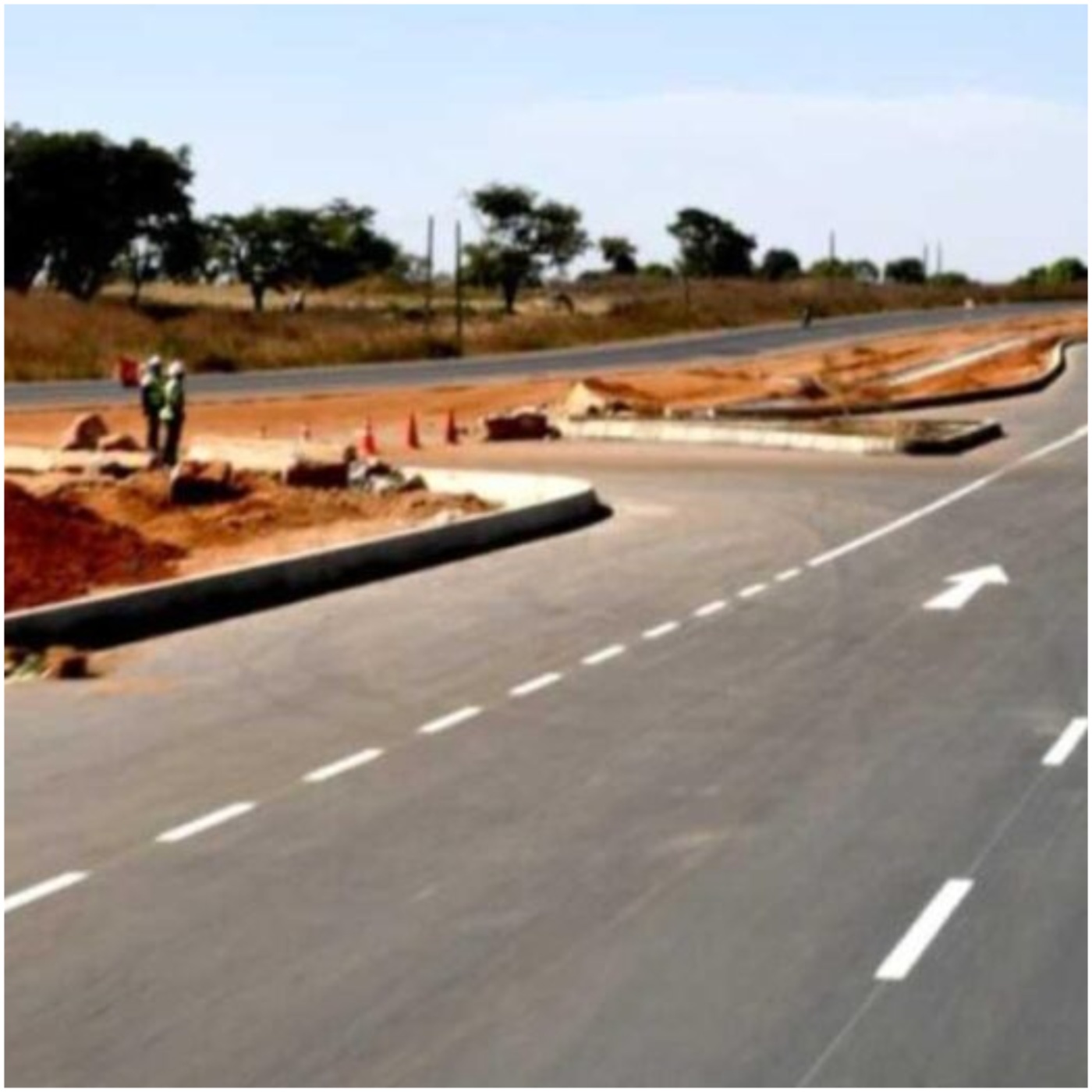
Igbo Association Raises Alarm Over Abuja–South East Highways, Seeks Urgent Federal Action
By: Michael Mike
Igbo residents in the Federal Capital Territory (FCT), Abuja have expressed worries about the worsening condition of major highways linking Abuja to the South East, warning that continued neglect has turned the roads into serious safety hazards for commuters and businesses.
In a statement released on Tuesday, the Igbo Community Association in the Federal Capital Territory (ICA FCT) said the poor state of the road network had persisted for decades, despite repeated appeals for rehabilitation.
The group in a statement signed by the association’s President General, Engr. Ikenna Ellis-Ezenekwe, and Secretary General, Mazi Emmanuel Chinwoke Onah,
noted that large sections of the highways are riddled with potholes, failed portions and weak security presence, making travel dangerous and discouraging economic activities between the North Central and South East regions.
The group argued that the situation reflects long-standing infrastructure neglect and an uneven distribution of national resources, adding that the dilapidated roads have become attractive routes for criminal operations, including armed robbery and kidnappings.
According to ICA FCT, the impact of the bad roads goes beyond transportation challenges, contributing to youth frustration, reduced commercial exchanges and a growing sense of exclusion among people of the South East. The association urged the Federal Government to declare an emergency on the affected corridors and begin immediate reconstruction to ensure the safety of travelers, particularly during the festive season.
The association also called on lawmakers from the South East and the Minister of Works to take responsibility for restoring the roads to acceptable standards, stressing that infrastructure development is critical to national cohesion and economic growth.
Warning of political consequences, the group said communities in the South East would hold their representatives accountable if tangible progress is not recorded before the 2027 general elections. It added that voters would be mobilized to oppose the re-election of lawmakers perceived to have failed in addressing the issue.
Reaffirming its commitment to the welfare of Igbo people, the ICA FCT said it would continue to advocate for improved infrastructure, enhanced security and equitable development across all regions of the country.
End
-

 News2 years ago
News2 years agoRoger Federer’s Shock as DNA Results Reveal Myla and Charlene Are Not His Biological Children
-

 Opinions4 years ago
Opinions4 years agoTHE PLIGHT OF FARIDA
-

 News8 months ago
News8 months agoFAILED COUP IN BURKINA FASO: HOW TRAORÉ NARROWLY ESCAPED ASSASSINATION PLOT AMID FOREIGN INTERFERENCE CLAIMS
-

 Opinions4 years ago
Opinions4 years agoPOLICE CHARGE ROOMS, A MINTING PRESS
-

 News2 years ago
News2 years agoEYN: Rev. Billi, Distortion of History, and The Living Tamarind Tree
-

 ACADEMICS2 years ago
ACADEMICS2 years agoA History of Biu” (2015) and The Lingering Bura-Pabir Question (1)
-
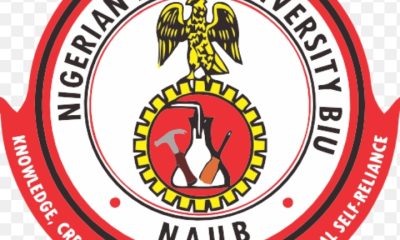
 Columns2 years ago
Columns2 years agoArmy University Biu: There is certain interest, but certainly not from Borno.
-
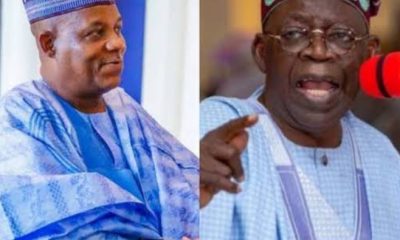
 Opinions2 years ago
Opinions2 years agoTinubu,Shettima: The epidemic of economic, insecurity in Nigeria





